With the release of the latest Westpac – Australian Chamber of Commerce and Industry (ACCI) survey on Industrial Trends, a concerning divergence has emerged between economic expectations and actual performance across a wide array of different metrics.
Over the nearly 30-year scope of the Westpac-ACCI index, the actual assessed performance has tracked the expected performance directionally relatively strongly.
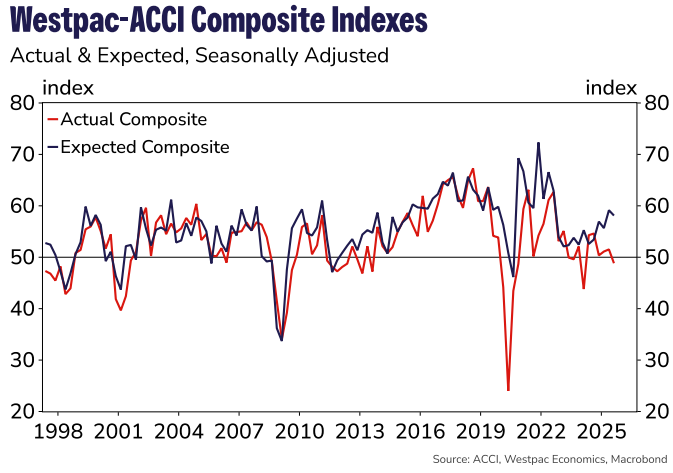
That is, until now.
In recent times, a significant gap has developed between actual conditions and those expected, with the two metrics trending in opposite directions.
Meanwhile, the labour market sub-index recently fell back into contraction.
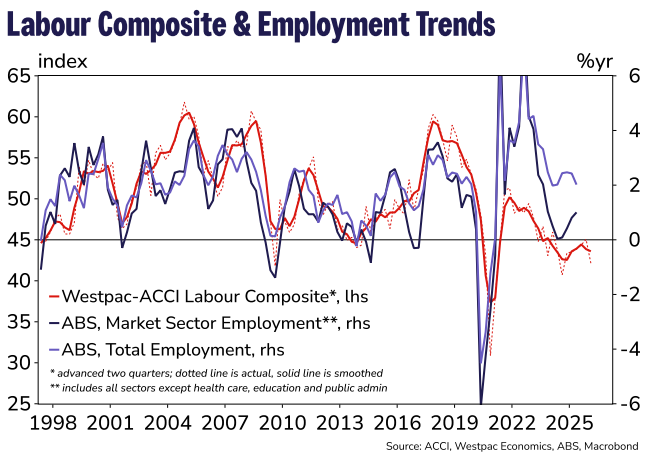
Westpac notes that given the two-speed nature of the labour market, the composite labour market indicator has been a useful indicator for determining the path of market sector employment growth.
As indicated by the Westpac analysis, non-market employment (public administration and safety, education, and healthcare and social assistance) has been a major driver of jobs growth for quite some time now, with market-based employment growth (all sectors aside from the aforementioned three) remaining relatively anaemic.
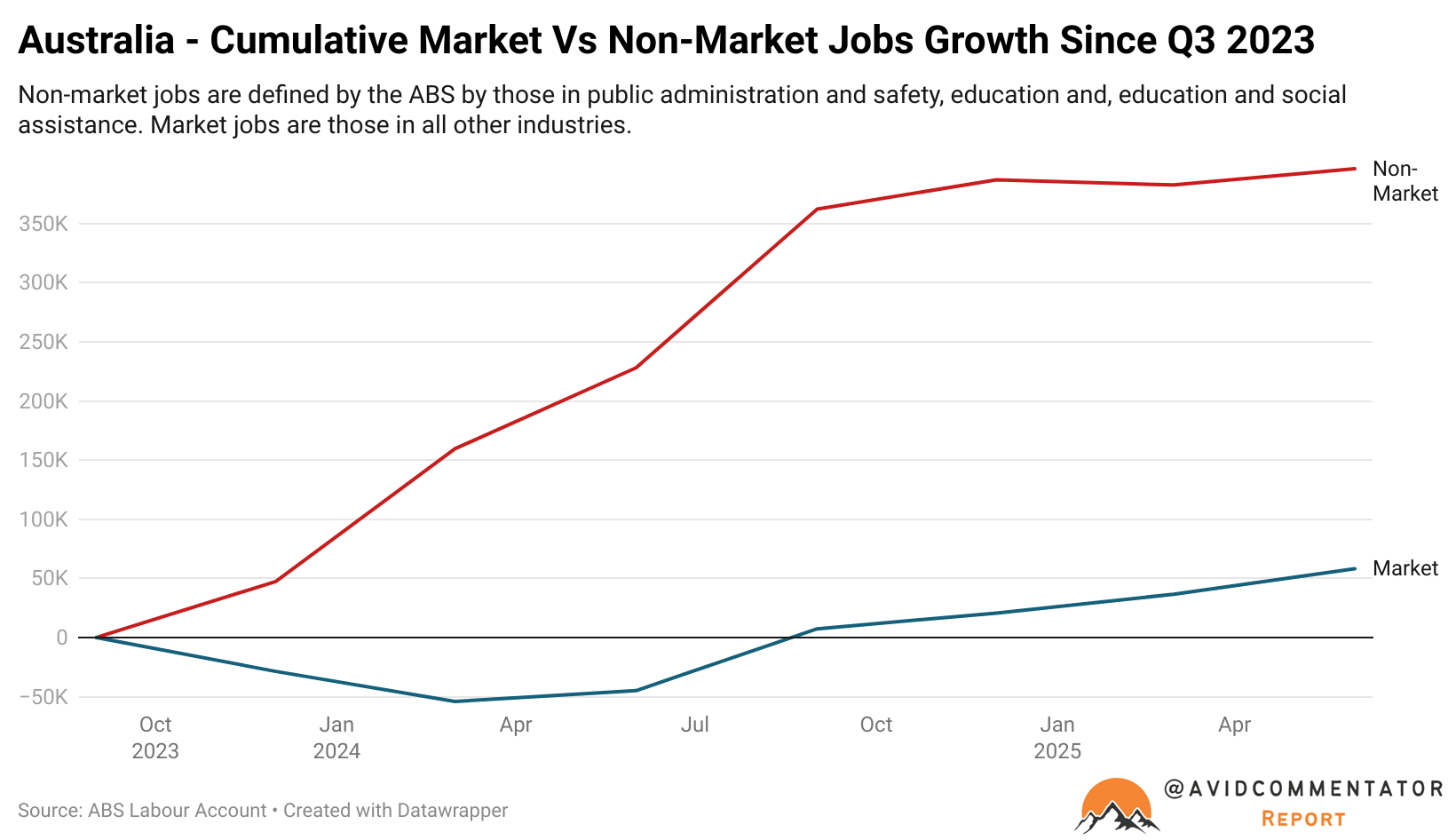
Meanwhile, the major divergence continues in the manufacturing output subindex, with actual conditions again deteriorating while expected conditions surged.
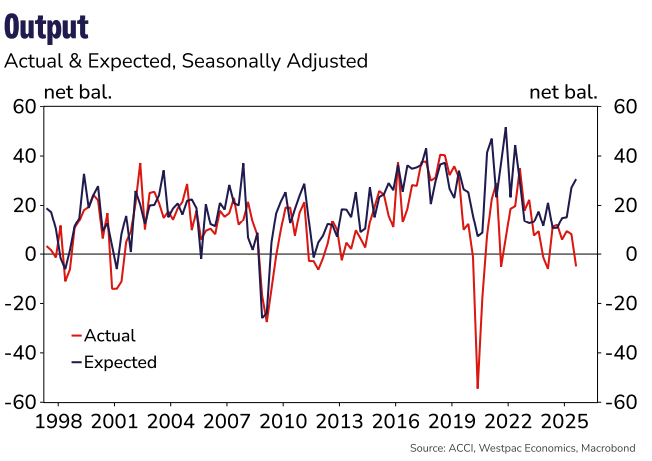
It’s a somewhat similar story with new manufacturing orders, with the actual performance in relative stagnation, while the expected performance continues to trend up.
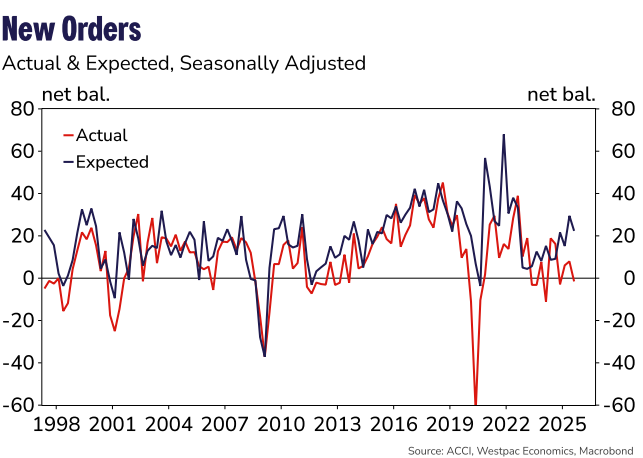
The Takeaway
The themes identified in the Westpac-ACCI index seem to be increasingly appearing in other metrics, indicating an expectation of better days ahead; however, these expectations may be somewhat ahead of actual conditions.
Going forward, it is a race between competing forces to see whether the economy begins to stall out or shift into a higher gear.
On one hand, if job growth fails to keep up with still elevated levels of labour force growth, then we could begin to see rising unemployment and households could become increasingly guarded about their future outlook, even as interest rates are cut.
On the other hand, if rising consumer confidence drives more Australians to open their wallets and spend, while the labour market at least treads water, then we may have the makings of a more sustained recovery in the rate of growth.

